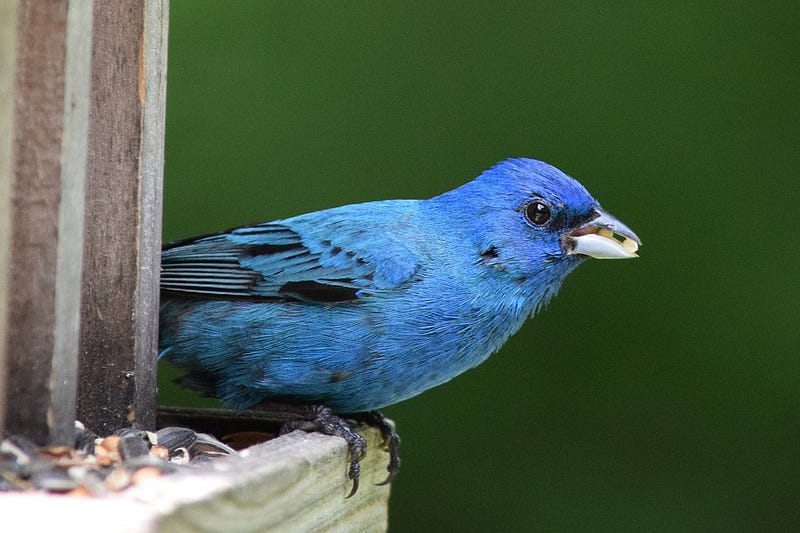Uncommonality of Blue in Nature
By Victoria Miller-Browne, Biology, 2020

This piece was originally published as part of Issue 34: Color.
When American scientist David Lee first entered the Malaysian tropical rain forest in the mid-1970s, he was astonished by the beautiful scenery, including the Rajah Brooke birdwing butterflies and the majestic trees. However, one plant in particular caught his eye: the blue Selaginella willdenowii plant. This plant is located in the understory of the tropical rainforest and can be identified by the iridescent electric blue color of its leaves. This factor initially shocked Lee, because leaves are often associated with the color green. This is because the chlorophyll pigment, found in the chloroplasts of plants, absorbs mainly red and blue light and the least amount of light in the green range. As a result, chlorophyll reflects green light off its surface. This brings up the question of why Selaginella willdenowii, already located in the sparse light of the forest floor, evolved to reflect blue light instead of absorb it.
In the world of plant evolution, the answer would be anthocyanins. Plant leaves typically have three classes of light-absorbing pigments: chlorophyll, which absorbs red and blue and reflects green; carotenoids, which absorb blue and green and reflect red, yellow, and orange; and anthocyanins, which absorb blue and green light and reflect between the spectrum of red and purple. Plants like blueberries and eggplant have a higher ratio of anthocyanins in comparison to chlorophyll, but it is important to understand that chlorophyll is still there, just that the pigment of the anthocyanins overcomes it.
Anthocyanins absorb blue and green light and reflect between the spectrum of red and purple.
Blue is also a rare color in the animal kingdom. According to a November 2017 article in Mother Nature Network, the reason for this is that the predominant pigments produced in the animal kingdom are carotenoids, eumelanins and pteridine compounds, which subsequently produce colors such as red, yellow, brown and black. Colors like blue usually occur due to reflection, like the iridescence observed in Selaginella willdenowii. In the case of some commonly known blue animals like the Cyanocitta cristata or the Blue Jay, according to Wisconsin Resources Magazine, the primary pigment is melanin, which would produce brown or black if no color wavelengths were absorbed. The bright blue color is caused by light bouncing off of multilayered feather barbs, which scatter blue light and absorb longer wavelengths. The underlying melanin actually increases the intensity of this blue color.
There’s still more research to be done about why blue is an uncommon color in nature, particularly in animals. For now, let’s enjoy the beauty that nature has offered, just as David Lee did nearly 50 years ago.
American Scientist (1997). “Iridescent blue plants.”
